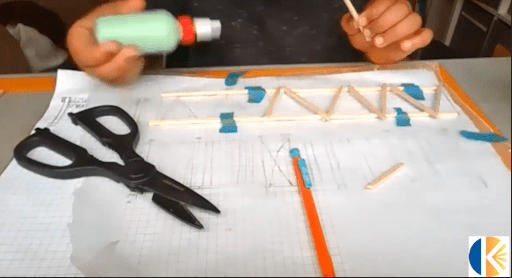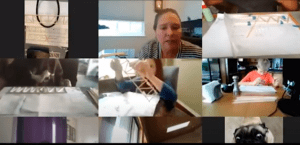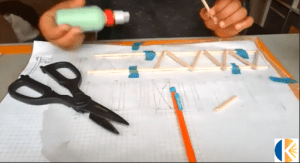It’s another day of virtual learning for Cara Phillips’ 6th grade engineering class. But on this day, the students are starting a special project, by building bridges. Only this time around, the class is handling it virtually.
“They have all designed their own trusses,” says Phillips. “And there are some specific requirements that they have to build balsa wood bridges out of, and then we are going to test to see who can make the most efficient balsa wood bridge.”
Phillips knows a thing or two about building. She has worked on dozens of major building and design projects during her 15-year career as a structural engineer prior to joining the faculty at STEM. Some of those projects include the owners loft at The Pepsi Center, the Broncos Training Facility, Maple Hall at Colorado School of Mines, and the Littleton Recreation Center. Each project she worked on had its own set of unique challenges and obstacles. But now, like so many other teachers, she’s tackling another challenge, with virtual teaching.
“I think when it comes to virtual learning, we were some of the pioneers,” she said.
Phillips points out that Stem School Highlands Ranch is no stranger to the virtual world. In years past, when Douglas County Schools would start two hours late on snow delay days, STEM would turn it into a virtual day. Research found that it was more efficient, and better on students who live up to an hour drive from school.
“So we’ve actually been doing this for probably five to six years,” she says. “So I think that helped them become adaptable and I also think a lot of the students here have a different mindset on education, and I think the teachers have a different mindset, that you can learn in different places, and you can even do hands on learning virtually.”
And as STEM finishes 2020 with virtual classrooms, Phillips says she has noticed some advantages to virtual learning.
“I was able to videotape what I did for the students today and post it, so they have that reference if they want to to back,” she points out.
But of course, there are challenges too. For example, in order to make sure the students had the supplies they needed for the bridge design project, she had to plan that out weeks in advance. Also, Phillips says in can sometimes be difficult to determine in a virtual setting, which students are in need of extra assistance.
“It’s also really hard because you can’t just walk around the classroom and check in, and help students who may be struggling and not necessarily know how to speak out,” she says. “So that’s the hard part is just reaching everybody and you can’t do your temperature checks walking around the classroom. You have to do your temperature checks either via a microphone or cameras, things like that.”
It’s a different style of teaching and learning. But, whatever the future holds for virtual classrooms, Phillips is confident that STEM students are ready for anything that comes their way.
“We have some amazing students at STEM,” she says. “And I’m so excited to see where they all go and I’m excited to motivate them.”
Watch the video feature of Phillips’ class constructing bridges below:





